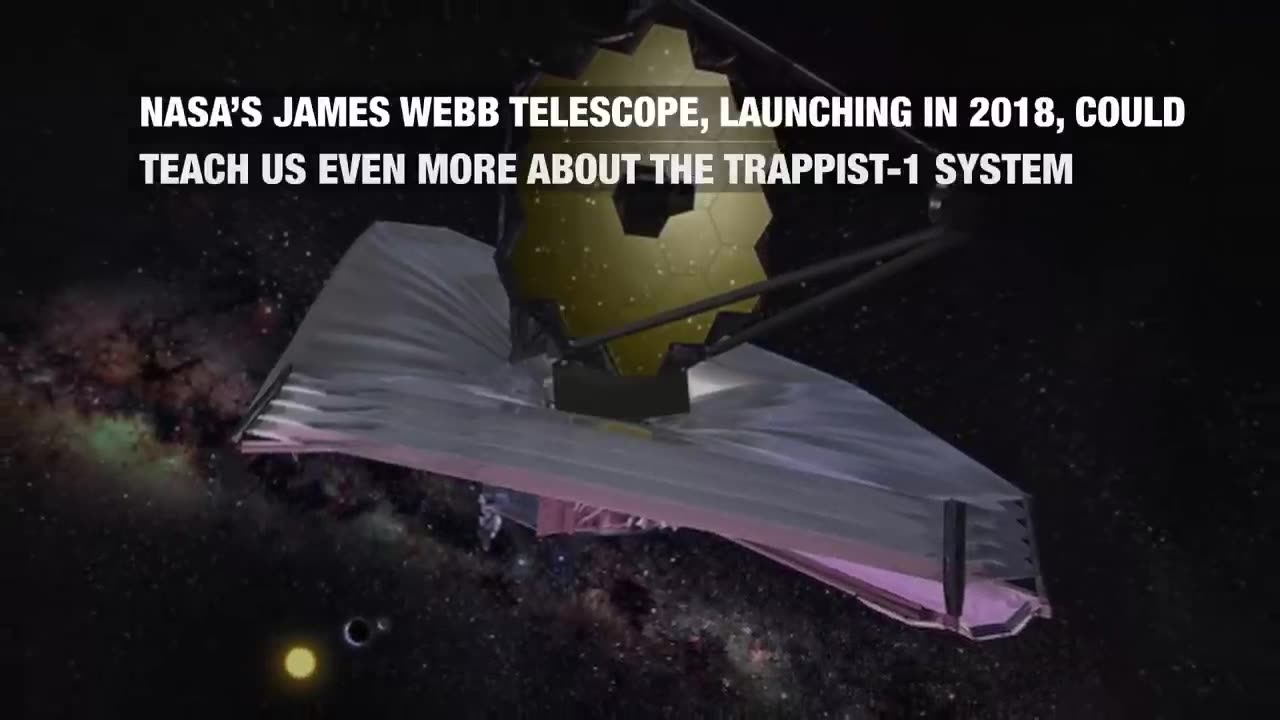Premium Only Content

Nasa and trappist 1
The most studied planetary system, aside from our own solar system, lies about 40 light-years away. We've looked at the seven rocky exoplanets orbiting the TRAPPIST-1 star with ground and space telescopes like Spitzer, Kepler, Hubble, and, now, the James Webb Space Telescope.
In March 2023, the first science from the Webb telescope was released. An analysis of TRAPPIST-1 b, the innermost planet, revealed its dayside temperature and found little evidence of an atmosphere.
In a press release on February 22, 2017, NASA announced the discovery of the most Earth-sized planets found in the habitable zone of a single star, called TRAPPIST-1. This system of seven rocky worlds–all of them with the potential for water on their surface – is an exciting discovery in the search for life on other worlds. There is the possibility that future study of this unique planetary system could reveal conditions suitable for life.
In February 2018, closer study of the seven planets suggested that some could harbor far more water than the oceans of Earth, in the form of atmospheric water vapor for the planets closest to their star, liquid water for others, and ice for those farthest away. The study pinned down the density of each planet more precisely, making TRAPPIST-1 the most thoroughly known planetary system apart from our own.
A 2021 study revealed more about TRAPPIST-1 planets. They are likely made of similar stuff, but they are different than Earth. That could mean they all contain about the same ratio of materials thought to compose most rocky planets, like iron, oxygen, magnesium, and silicon. But if this is the case, that ratio must be notably different than Earth's: The TRAPPIST-1 planets are about 8% less dense than they would be if they had the same makeup as our home planet.
-
 1:45:02
1:45:02
Glenn Greenwald
4 hours agoIsrael Slaughters More Journalists, Hiding War Crimes; Trump's Unconstitutional Flag Burning Ban; Glenn Takes Your Questions | SYSTEM UPDATE #504
87.9K81 -

Killerperk
1 hour agoRoad to BF6. Come hang out #regiment #bf6
1.35K -
 LIVE
LIVE
Jokeuhl Gaming and Chat
2 hours agoDARKTIDE - Warhammer 40k w/ Nubes Bloobs and AoA
33 watching -
 LIVE
LIVE
Cripiechuccles
3 hours ago😁💚💙MOTA MONDAY WITH CRIPIE💚💙 👌SMOKING, GAMING & WATCHING FLICKS!:😁
39 watching -
 36:11
36:11
Stephen Gardner
1 hour ago🔥'Burn ALL TRUMP FLAGS’ says Tim Walz + Democrat CAUGHT rigging own election!
9.58K3 -
 10:10
10:10
robbijan
1 day agoHollywood’s Hidden Messages: Predictive Programming & What’s Next
9.56K9 -
 40:13
40:13
MattMorseTV
3 hours ago $3.75 earned🔴It's EVEN WORSE than we thought...🔴
23.3K62 -
 LIVE
LIVE
MissesMaam
5 hours agoVariety Games💚✨
70 watching -
 LIVE
LIVE
Sgt Wilky Plays
2 hours agoThe Finals with the Pack
36 watching -
 32:55
32:55
Clickbait Wasteland
10 hours ago $0.23 earnedAsking New Yorkers Who They Support For Mayor: Wall Street
8.71K2